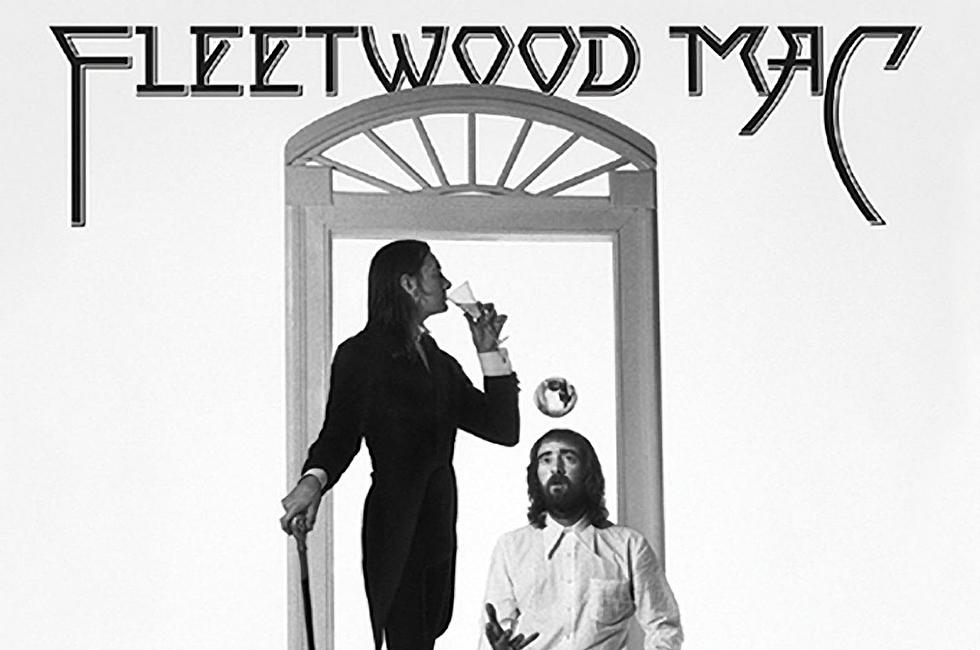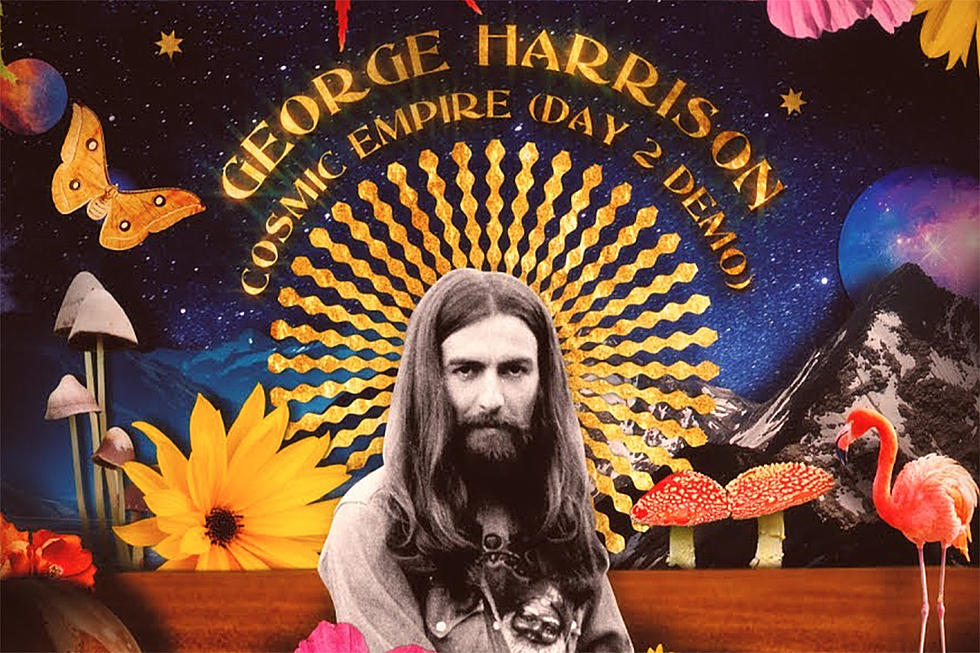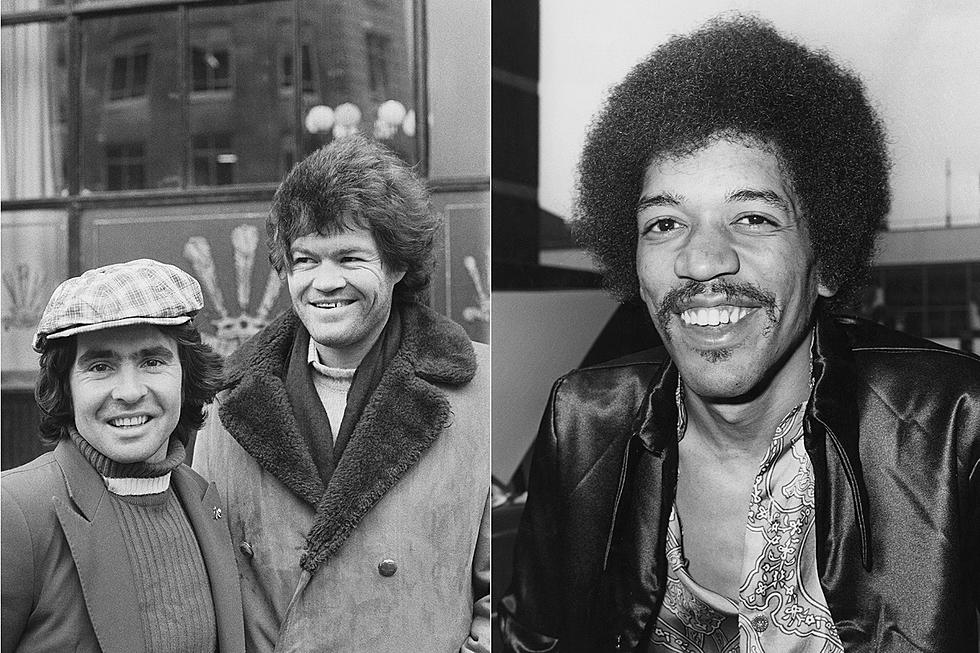
10 Facts About Fleetwood Mac’s 1975 Self-Titled Album
Fleetwood Mac's 1975 self-titled release was not a debut album but with new members and a new musical direction, it could just as well have been.
Lindsey Buckingham and his girlfriend/songwriting partner Stevie Nicks found themselves in the right place at the right time: The departure of guitarist Bob Welch at the end of 1974 necessitated an immediate replacement – and within a few months, the most enduring (but not necessarily least tumultuous) Fleetwood Mac lineup had come to fruition.
As the new group entered the studio for recording sessions in early 1975, there were still plenty of kinks to work out. Nevertheless, the end result featured several of Fleetwood Mac's most memorable songs, many of them written by the women of the group – including Christine McVie's catchy "Say You Love Me" and Nicks' haunting "Rhiannon," both remained in their live-performance rotation for decades.
Much of the drama that would plague the band had yet to arrive. With a nearly clean slate, Fleetwood Mac reintroduce itself on this 10th studio album. Here are 10 interesting facts about how they did it.
1) Buckingham / Nicks: A Package Deal
In December 1974, Mick Fleetwood was seeking a new guitarist for Fleetwood Mac, who had recently relocated from the U.K. to California. He also needed a new studio. Somewhat desperate (the band's last album, Heroes Are Hard to Find, hadn't done quite as well in sales as they had hoped), Fleetwood went to see producer Keith Olsen at Sound City Studios in Los Angeles. Olsen played an album he had engineered two years prior, Buckingham and Nicks' self-titled debut. Impressed with the guitar work on their song "Frozen Love," Fleetwood invited Buckingham to come on board – alone. Buckingham insisted that he'd join as a package deal with Nicks, or not at all. Fleetwood “was standing there grooving to this searing guitar solo and he needed a guitar player," Buckingham told Uncut in 2003. "That was as far as his thinking went. I had to explain we came as a duo. Stupid me, eh?”
2) Introducing Keith Olsen
Olsen only had a handful of LP credits to his name when work began on Fleetwood Mac. His background, in fact, wasn't in rock at all: Olsen was a cellist by training. "I was a bad acoustic guitar player, a bad piano player, a bad bass player … anything I could get my hands on that I could play and learn a little bit about," he admitted in a 2012 interview. "But I knew that I liked music. I liked the theoretical aspects of it." The gig with Fleetwood Mac led Olsen further down the path to studio greatness. In the following decades, he would produce an array of albums from bands including the Grateful Dead, Foreigner, Santana, Heart, Bad Company, Whitesnake and dozens more. Olsen died last year at age 74.
3) Pop Rock, A 'Much Faster Way to the Bank'
Fleetwood Mac had long-since established themselves as an impressive blues-rock band, thanks to the soulful talent of former member Peter Green. It was, however, time for a change if the group wanted to remain relevant in the eyes of rock fans, as well as stay financially afloat in a fast-moving industry. Buckingham's upbeat "Monday Morning," the album's opener, seemed designed to accomplish both things. But bassist John McVie questioned if it was the right direction for Fleetwood Mac to take, given their background. “We’re doing pop rock now," Olsen countered. "It’s a much faster way to the bank.”
Listen to Fleetwood Mac's 'Monday Morning'
4) New Cooks in the Kitchen
For the original members of Fleetwood Mac, this sudden introduction of newcomers spelled a shift in power dynamics. Buckingham, confident in what he thought did or did not sound good in the studio, started telling the other members what to play and how to play it. That earning a stern admonishment from John McVie, who said to him: “The band you’re in is Fleetwood Mac. I’m the Mac. And I play the bass.” Buckingham admitted that he “came in as the new kid on the block, but I was also the kid with the ideas – and so John and I used to butt heads quite a bit. It took me a long time to appreciate his approach.”
5) Peter Green's Ongoing Influence
Despite the sonic shift, the deep blues-based style of departed co-founder Peter Green remained a part of their music. "World Turning," a song written by Christine McVie and Buckingham, was loosely based on a track from the Fleetwood Mac's 1968 debut album, also self-titled. The newer version featured a more upbeat, chugging guitar riff, backing vocals from Nicks, and Fleetwood's talking drum – an hourglass-shaped percussion instrument from West Africa designed to mimic the phrasing of a human singing voice.
Listen to Fleetwood Mac's 'World Turning'
6) The Origins of 'Blue Letter'
There was only one song on Fleetwood Mac not written by any of the members, old or new: "Blue Letter." The track arrived courtesy of country-rock brothers Rick and Michael Curtis, who had met Buckingham and Nicks before they joined Fleetwood Mac. The foursome recorded a couple of demos together, including "Blue Letter" and another song called "Seven League Boots." The latter would subsequently be reworked by Stephen Stills to become the Top 20 hit "Southern Cross" from Crosby, Stills and Nash's 1982 album Daylight Again.
Listen to Fleetwood Mac Perform 'Blue Letter'
7) 'Over My Head,' the Unlikely Breakthrough
Christine McVie's "Over My Head" was selected as the lead U.S. single for the album, a decision they did not expect would yield much success. At this point, Fleetwood Mac hadn't issued a Billboard-charting song since 1969's "Oh Well." Besides, "I've never written with the intention of writing hits," McVie said in a 1980 interview. "I guess I'm a commercial writer, though. My songs do tend to come out two verses, bridge, guitar solo, last verse, and tag. When I've finished a piece, I do have my opinion about whether it will sell, of course, but I'm not always right. 'Over My Head' was a very unpredictable hit, as far as I'm concerned. The fact that it was bigger than 'Say You Love Me' [from the same album] surprised everyone."
8) All the Single Ladies
Today, Fleetwood Mac is well-known for being one of the first mainstream rock bands to prominently feature not just female members, but female songwriters. Each of the four singles released from Fleetwood Mac was written solely by the women of the group, beginning with Christine McVie's "Warm Ways" in the U.K., followed by her "Over My Head" in the U.S. as well as "Say You Love Me" and finally Nicks' "Rhiannon," which was put out a year after the LP's initial release. Though "Warm Ways" did not chart, the remaining three made it into the Top 20 on the Billboard Hot 100.
Listen to Fleetwood Mac Perform 'Rhiannon'
9) The Other 'White Album'
Per tradition, Herbert W. Worthington's two-tone cover photo featured only a couple members of the band, this time just Fleetwood and John McVie. In the years since, Fleetwood Mac has often been referred to as the "white album" because of its lack of color, and perhaps also to differentiate this 1975 release from their earlier self-titled LP. A cover featuring the entire group would not appear until 1997's The Dance.
10) Eventual Success
Though now considered one of the band's most important albums, Fleetwood Mac did not enjoy high levels of success upon original release. In fact, it took more than a year of touring to finally bring the record to No. 1 on the Billboard 200 chart in September 1976 – some 15 months after being released. “We just played everywhere and we sold that record," Nicks told Uncut. "We kicked that album in the ass.”
Fleetwood Mac Albums Ranked
Stevie Nicks Talks About Life After Music
More From WDBQ-FM










